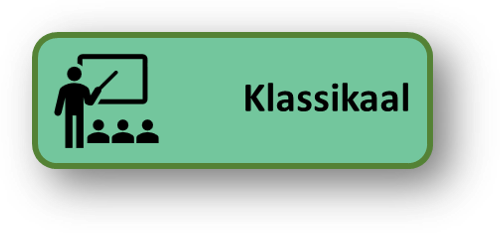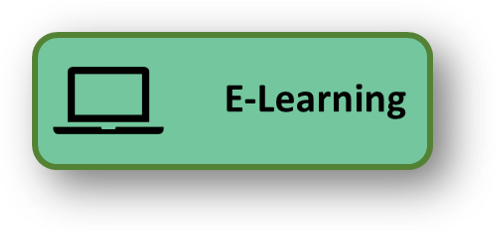Aangeboden leervormen
Software Testing with Visual Studio 2013 (20497)
In this course, Developers and Testers will learn to use the tools in Visual Studio 2013 Ultimate to complete software testing requirements. Students will learn how to plan test efforts, execute manual and automated tests, and some techniques to manage work items and the test process workflow. This course will also prepare students for exam 70-497.
This course is designed for Visual Studio Online, a Microsoft hosted software-as-a-service (SaaS). Like most hosted application services, the look and feel of this service might change periodically. Although this course has been designed to minimize inconsistencies, you may notice some differences between the course content and the current version of Visual Studio Online that is available during the training event.
At Course Completion
After completing this course, students will be able to:
· Explain the benefits of using Visual Studio Online.
· Record requirements as PBI or bug work items.
· Use Microsoft Test Manager to create a test plan.
· Use Test Runner to run a manual test.
· Perform exploratory testing by using Microsoft Test Manager.
· Prepare testing efforts for the next sprint.

Voor wie
This course is intended for professional software testers and developers who have one or more years of experience working on a software development team. They manage the process of running tests, creating and monitoring bugs, and managing and mitigating issues that a software organization has in controlling test coverage for project requirements. The qualified candidate typically has a strong understanding of the software testing role and modern testing practices, and the ability to implement testing practices by using Microsoft technologies.
Programma
Voor de omschrijving van de e-learning >>> KLIK HIER <<<
Module 1: Introduction to Application Lifecycle Management
This module introduces the core technologies and practices that a software development team needs to understand in order to set up and use Visual Studio Online. Understanding the core technologies and practices will help the software development team to plan and track the software development and testing effort.
Lessons
· Software Testing in an Agile World
· Application Lifecycle Management
· Visual Studio Online
· Team Projects
· The Fabrikam Fiber Case Study
Lab : Configuring the Learning Environment
· Forming Teams
· Creating the Fabrikam Fiber Team Project
· Install the Fabrikam Fiber website
After completing this module, students will be able to:
· Explain the role of a test team in agile software development.
· Describe how Microsoft Visual Studio 2013 supports the components of the current Application Lifecycle Management (ALM) tools and practices.
· Explain the benefits of using Visual Studio Online.
· Create a team project.
· Explain the Fabrikam Fiber case study from a business and technology point of view.
Module 2: Planning and Tracking Work
This module introduces the practices and tools that are used to create and manage a product backlog, plan a sprint, and create and track the work during the sprint.
Lessons
· Writing Agile Requirements
· Capturing Agile Requirements
· Planning a Sprint
Lab : Planning the Development Effort
· Creating a Product Backlog
· Evaluating the Fabrikam Fiber Website
· Planning the Sprint
After completing this module, students will be able to:
· Write agile requirements.
· Record requirements as PBI or bug work items.
· Plan a sprint by forecasting work and creating a sprint backlog.
Module 3: Planning the Testing Effort
This module introduces the practices and activities that are used to plan the testing effort by using Microsoft Test Manager. The module also covers how to use Microsoft Test Manager to create test plans, test suites, and test cases.
Lessons
· Knowing What to Test
· Microsoft Test Manager
· Organizing the Testing Effort
· The Test Case
Lab : Planning the Testing Effort
· Creating a Test Plan
· Creating a Test Suite
· Creating a Test Case
After completing this module, students will be able to:
· Describe the different types of software tests.
· Use Microsoft Test Manager to create a test plan.
· Create each type of test suite.
· Create a test case.
Module 4: Running Manual Tests
This module introduces the tools and practices that a software development team will use to run manual tests by using Microsoft Test Manager (MTM).
Lessons
· Knowing Where and When to Test
· Running a Manual Test
· Recording and Playing Back
· Collecting Data
· Viewing and Analyzing Test Results
Lab : Running Manual Tests
· Running a Manual Test
· Creating an Action Recording
· Capturing Data Automatically During Testing
· Viewing and Tracking Test Results
After completing this module, students will be able to:
· Explain how developers and testers should collaborate.
· Use Test Runner to run a manual test.
· Create and play back an action recording.
· Capture data manually and automatically during testing.
· View and analyze test results and test runs.
Module 5: Testing in the Real World
This module introduces additional tools and practices that a software development team can use to solve problems that come up when testing real applications in dynamic environments.
Lessons
· Using Parameters and Shared Steps
· Testing on Different Configurations
· Testing in Team Web Access
· Exploratory Testing
Lab : Testing in the Real World
· Creating More Resilient Tests
· Testing by Using Multiple Configurations
· Running Tests by Using Team Web Access
· Performing Exploratory Testing
After completing this module, students will be able to:
· Use parameters to make manual tests more resilient.
· Use shared steps to simplify test creation and maintenance.
· Create multiple configurations to support additional operating systems and browser types.
· Run simple manual tests by using Team Web Access.
· Create test cases with multiple steps by using Team Web Access.
· Perform exploratory testing by using Microsoft Test Manager.
· Create a bug from an exploratory testing session.
· Create a test case from an exploratory testing session.
Module 6: Improving Testing Practices
This module encourages the students to think about the future. Manual testing is pretty straightforward, and Microsoft Test Manager makes it simpler. However, high-performance teams that release new editions of applications regularly need automation, complex test environments, and a plan to evolve their test plan from sprint to sprint. This module covers all of these topics.
Lessons
· Automating Test Cases
· Promoting Test Cases
Lab : Improving Testing Practices
· Creating a Coded UI Test
· Setting Up Regression Testing
After completing this module, students will be able to:
· Explain the value of automated regression testing.
· Prepare testing efforts for the next sprint.
Voorkennis
Before attending this course, students must have:
· 1 or more years of experience working as a tester on a software development team
· 1 or more years of experience reading or writing software requirements
· 1 or more years of experience using Microsoft Test Manager 2012 or 2013
Examen
Microsoft examen 70-497 Software Testing with Visual Studio 2013
Duur training
Klassikaal: 2 dagen
Open Leercentrum: 2 dagen
E-Learning: 90 dagen










